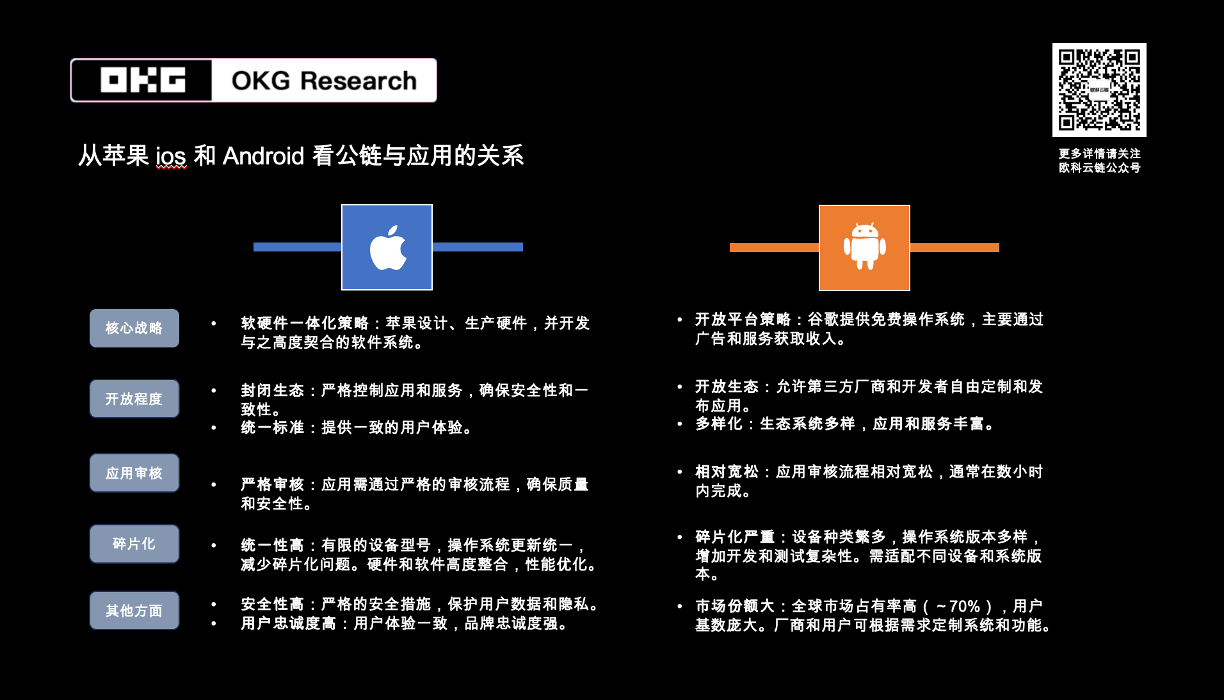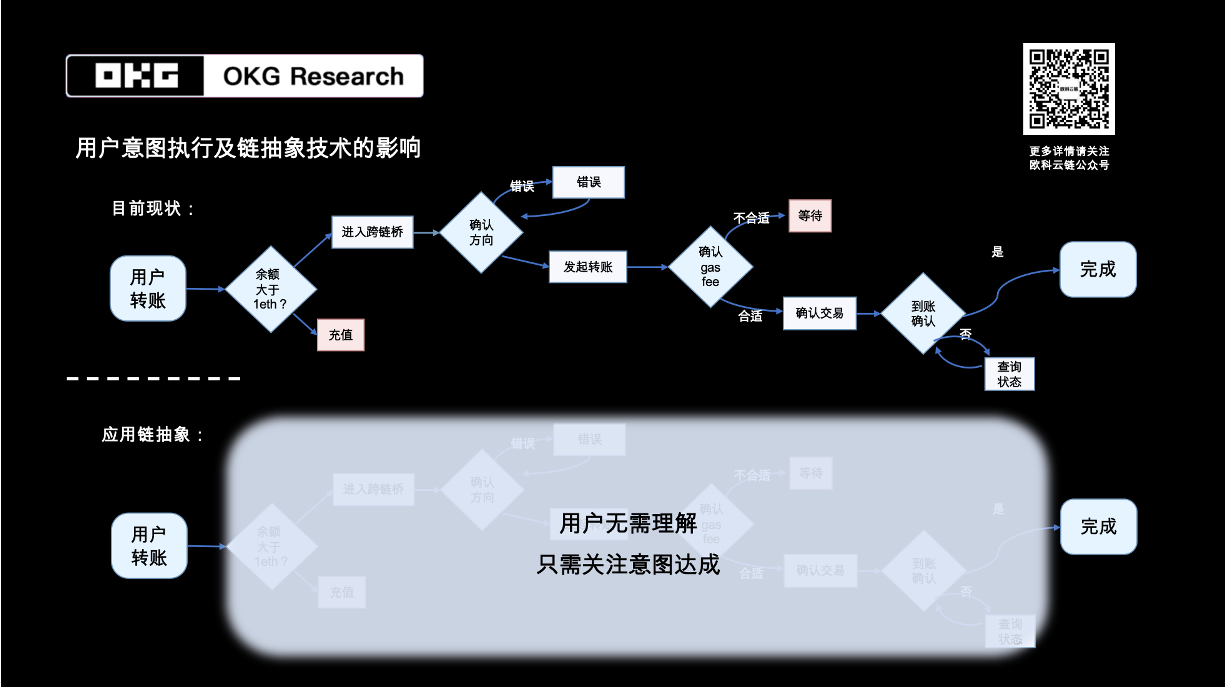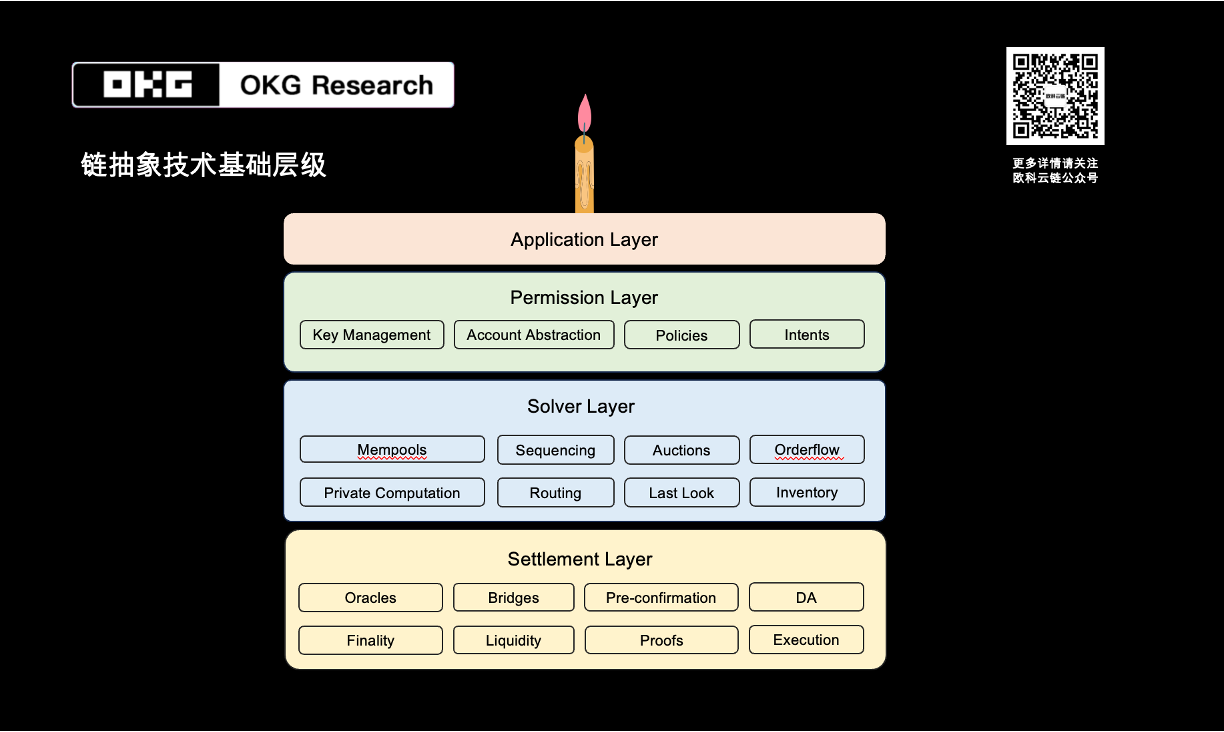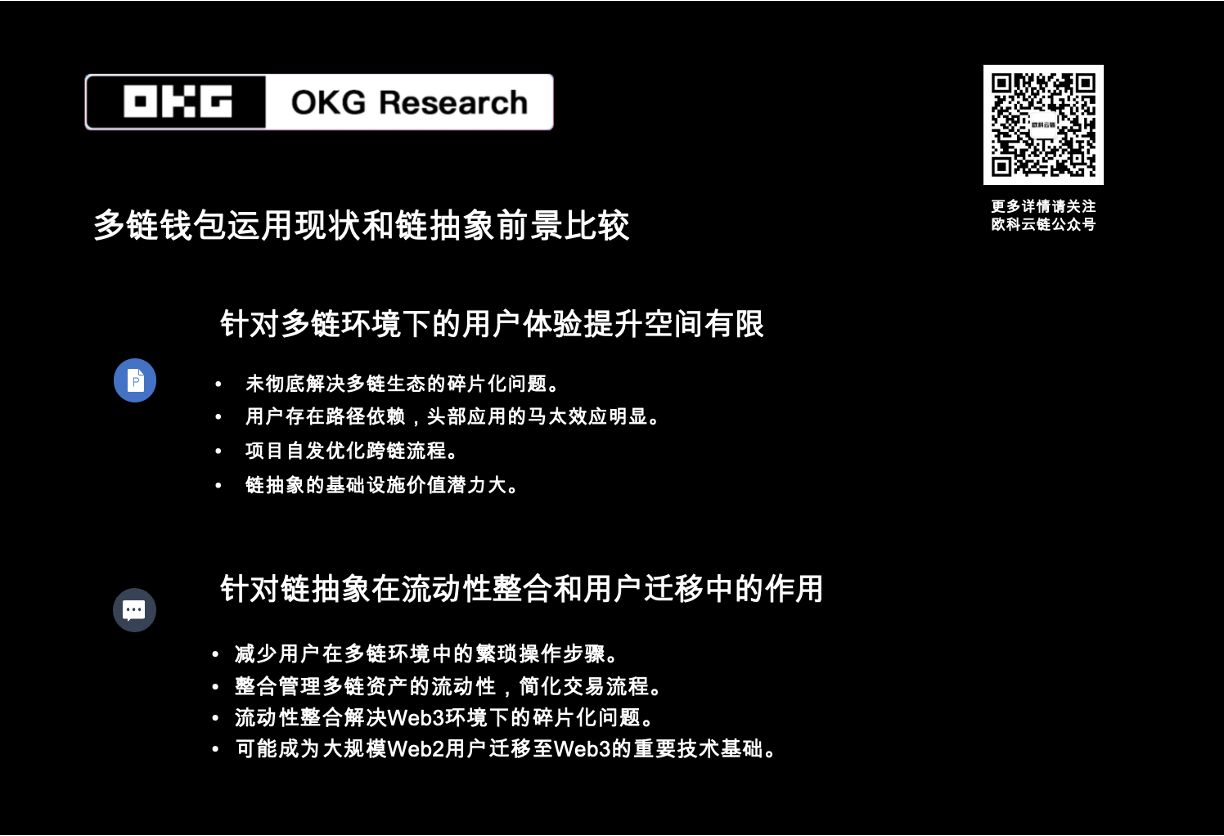Produced | OKG Research
Author | Samuel QIN
In the rapid evolution of the current crypto market, user growth has become the cornerstone of the industry's sustainable development. The mainstream view is shifting from pure technical exploration to a greater focus on application value in driving the industry forward. Although the Web3 ecosystem has developed rapidly in recent years, and the entry of traditional capital has brought new vitality, there are still some noteworthy aspects in the actual expansion of the application layer.
The increasingly inflated public chain ecosystem is overwhelming, and the rapid development of the Web3 ecosystem has brought the demand for cross-chain interoperability, where leveraging the advantages of different chains can unleash greater value. This reflects the natural evolution of the industry ecosystem, just like the development of e-commerce platforms from a single platform to the integration of the entire industry chain.
However, from the perspective of public chain competition, the ecosystem moat built on killer applications and user base is the absolute reliance to ensure industry advantages, so setting higher compatibility thresholds and migration costs will be a key consideration. From the perspective of technological development, the different consensus mechanisms and programming languages make cross-chain technology itself very challenging, which also poses technical barriers to the transfer of value and information interaction between different blockchains.
The contemplation of the relationship between public chains and applications can find some inspiration from the different mobile ecosystem systems of Apple and Android.

*Table Source: OKG Research
Apple adopts a hardware-software integration strategy. This strategy ensures a high degree of fit between hardware and software, providing a smooth and consistent user experience. Android, on the other hand, allows multiple manufacturers to use its operating system, forming a diversified hardware ecosystem, but also bringing the problems of device fragmentation and uneven application quality.
This precisely confirms the two different ways of ecosystem development, where hardware-software integration can better define the closed loop of one's own ecosystem, and the application entry and migration costs are relatively higher; while the open system requires compatibility with a wide variety of devices, and the user experience is also more closely related to the hardware.
As an open environment, public chain systems need to lower the development threshold and improve the user experience in order to form their own competitive advantages. Currently, the following strategies are often adopted:
Modular functional components: Provide easy-to-integrate modular development tools, such as smart contract templates, SDKs and API interfaces, to help developers quickly build applications. For example, Ethereum's Truffle framework and OpenZeppelin's smart contract library provide rich resources for developers and simplify the development process.
Improve the underlying infrastructure: Optimize the performance and security of the blockchain, ensuring high throughput, low latency and strong security guarantees. For example, Solana achieves high TPS through its high-performance consensus mechanism, meeting the needs of large-scale applications.
Enhance user experience: Develop intuitive and secure wallets and user interfaces to lower the user entry threshold. For example, the OKX Web3 Wallet, compared to single-chain ecosystem wallets or multi-chain wallets that only support a few chains, currently supports 100+ public chains, providing one-stop user management functions, built-in rich DApp ecosystem, and providing users with a comprehensive and convenient Web3 experience.
Although the overall user-friendliness of Web3 has seen a very obvious improvement, for newcomers to Web3, understanding the on-chain workflow is a rather arduous process, but expressing their intentions is often just a matter of a sentence. If you need to transfer 1 ETH from the Ethereum network to the Polygon network at this moment, the specific process can be broken down as follows:

*Flow Chart Source: OKG Research
We can discover through the flowchart:
Users need to check the account balance (if insufficient, they need to aggregate ETH from other wallets to the specified Ethereum wallet)
Confirm the direction of the transfer
Confirm the gas fee
Confirm the arrival
If users only need to focus on whether their transfer needs are ultimately met, and leave the rest of the cross-chain and checking actions to be handled by the specific network or application, the interaction behavior will be greatly simplified.
Imagine if you are planning to embark on a journey to different countries, and if you are using an international credit card to shop around the world, as a user, you don't need to worry about the currency types in different countries, currency exchange rates, cross-border payment clearing processes, and different countries' payment network systems, etc. You just need to swipe your card, and the entire complex process will be automatically completed at the backend. This is a kind of "abstraction", hiding the complexity and providing a simple user experience.
The "chain abstraction" mentioned earlier is the same logic, and its core value lies in:
Simplifying complexity: Users only need to specify the "starting point" and "destination"
Unified interface: The underlying chains or any bridging protocols are all summarized and managed by the same simple interface
Smart routing: Automatically select the optimal path and choose the best bridging protocol
Error handling: Automatically retry, automatically handle exceptions, and provide unified error feedback
We can try to think of chain abstraction as a technical means to solve the problems of asset, liquidity and account fragmentation in the multi-chain ecosystem. Through a unified interface and standards, it realizes user-based cross-chain interactions, simplifies the user experience, and allows users to complete cross-chain asset operations and value transfers without understanding the details of the underlying chains.
However, in terms of the current development of chain abstraction technology, the current technical implementation still faces many challenges, such as the latency of cross-chain message transmission, the security and cost issues of cross-chain operations. Some projects are trying to improve these issues through lightweight cross-chain protocols for cross-chain asset transfer or decentralized gateways for cross-chain communication, but large-scale deployment is still limited.
The mainstream view currently divides chain abstraction into four levels: application, permission, solving/execution, and settlement CAKE Framework, and obtains the specific optimal execution steps by decomposing the user's intentions layer by layer.

*Graph Source: OKG Research, https://frontier.tech/the-cake-framework
But the various issues involved in the middle, such as decomposition based on user subjective intentions, cross-chain, cross-DApp, trusted execution environment, state confirmation, etc., also seem quite thorny to solve. Currently, many projects in the industry are pushing the application of chain abstraction technology in specific practical cases driven by users, and are in the stage of continuous development and iteration. The multi-chain wallet applications represented by the OKX Web3 Wallet can be a important infrastructure in the chain abstraction track. Chain abstraction technology has already shown initial results in the OKX Web3 Wallet, manifested in the simplification of multi-chain asset management and the convenience of cross-chain interactions, where users can manage assets on different chains within the same interface, avoid frequent network switching, and use a single wallet to complete cross-chain transfers, significantly reducing the complexity of cross-chain operations. The launched smart contract wallet function has also improved the shortcomings of the original EOA (externally owned account) wallet in areas such as multi-chain wallet management integration, user authorization, and gas fee integrated payment.
In many previous discussions, multi-chain wallets and chain abstraction have often been compared, with the discussion mainly focusing on whether wallet applications that have already significantly improved the interaction experience compared to EOA wallets still need chain abstraction.
Here I would like to discuss in the following two directions:
Whether user experience needs to be significantly improved in the current application context. In the current multi-chain environment, there is indeed room for significant improvement in user experience, but the urgency of demand may not be a one-size-fits-all solution. Taking cross-chain transactions as an example, the current mainstream multi-chain wallets still require users to manually switch networks and pay Gas fees, and this operational requirement has not truly solved the fragmentation problem of the multi-chain ecosystem. However, in actual applications, the flow of on-chain funds often tends to be clearly profitable, and users are more inclined to choose applications with known paths or optimized user experience. Due to the Matthew effect of leading applications, many projects have spontaneously invested in optimizing the cross-chain process. For example, many DeFi protocols have built-in cross-chain bridges and liquidity aggregators to simplify users' cross-chain operations and provide a more convenient experience. For chain abstraction projects, relying solely on the narrative of improving user experience is not enough to form a sufficient competitive barrier. Therefore, the value of chain abstraction lies more in its role as infrastructure, gradually realizing seamless interoperability between multiple chains, currently reorganizing inter-chain liquidity, and providing support for possible large-scale user migration and cross-chain application scenarios in the future.
Liquidity integration is an important issue that the industry cannot avoid, especially in the process of realizing the migration of Web2 users to Web3. The continuous influx of incremental users is crucial for future development, but the key to this transformation lies in providing a more convenient user experience, especially in the smooth migration from Web2 to Web3 in terms of asset, transaction and payment scenarios integration in the multi-chain environment, the interaction threshold faced by early users must be lowered. Chain abstraction technology, through unified interfaces and cross-chain resource integration, helps users reduce the cumbersome operational steps in the multi-chain environment, allowing Web2 users to seamlessly enter the Web3 ecosystem. For example, chain abstraction can automatically manage the liquidity of multi-chain assets, simplify the payment process, and integrate the transaction experience on different chains, thereby solving the fragmentation problem in the Web3 environment. This liquidity integration not only improves the user experience, but also lays a solid foundation for the widespread application of Web3 and large-scale user migration.

*Chart Source: OKG Research
It can be seen that the application scenarios of chain abstraction are actually laying the foundation for the true maturity of Web3. It not only aims to solve the interoperability issues in the current blockchain ecosystem, but also significantly reduces the complexity of operations in the multi-chain environment through cross-chain resource integration and liquidity management.
These improvements have driven the Web3 ecosystem to develop in a more open and interconnected direction. In the future, chain abstraction is expected to become an important pillar for the large-scale popularization of decentralized applications, providing efficient and seamless infrastructure support, and helping more users easily enter the Web3 world and realize seamless multi-chain interaction.
[Disclaimer] This article does not constitute investment advice, and users should consider whether any opinions, views or conclusions in this article are suitable for their specific situation.








